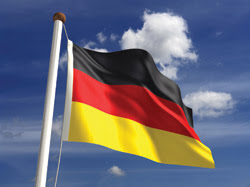Jörg Schwartz, contributing editor, j.schwartz@wsap.net
 Germany holds a strong position in optics and photonics technologies, including test and measurement, imaging and optical manufacturing.
Germany holds a strong position in optics and photonics technologies, including test and measurement, imaging and optical manufacturing.
Here is what I see as the most interesting market and technology activity:
Industrial plant and manufacturing technologies are traditionally strong, one reason why the country has a significant market share in laser materials processing. Trumpf, a leader in the field, recently snapped up Southampton, UK-based SPI Lasers, which previously reinvented itself by moving from telecoms to fiber lasers. The transaction indicates how important fiber lasers have become for the industrial laser scene – if not for the entire laser market. And not only do the big players reflect this, but also there are a number of start-ups developing fiber laser concepts and applications.
Nanoscience has been the main agenda for the past few years, supported by significant interest and public funding. But optics heavyweight Carl Zeiss’ investment in start-up Nanoscribe, a developer of laser direct-write tools for three-dimensional nanostructuring, indicates that the field also is becoming commercially relevant. The company’s compact, easy-to-operate tabletop laser lithography systems enable true 3-D nanostructures in photoresists and offer an alternative to creating extremely small patterns for photolithography. This most likely will be relevant to biotechnology and other areas of nanophotonics.
Displays come on strong
Next-generation illumination devices – including large-area displays – are another area in photonics where Germany has a strong position, especially with Osram GmbH, a major player, headquartered there. The trend is organic LED technology, which promises to generate light using plastics at very low cost and power consumption. What’s more, the plastics can be applied in thin layers to make large-area emitters.
Fraunhofer Institute for Photonic Microsystems not only hopes to advance the technology but also aims to develop low-cost manufacturing procedures, keeping Europe in the game. And Osram has developed a large-area, transparent white organic LED.
Another place where low-cost manufacturing of large-area photonic devices is a high priority is photovoltaics. Technologies for making low-cost solar cells using processes from the printing industry are emerging to meet a steeply growing market (the German Solar Industry Association expects a worldwide growth figure of greater than 50 percent for 2008).
Solar technology has reached a strong position in Germany because of significant public funding for homeowners installing solar cells, a political trend picking up in many other European countries. As a result, the country’s already strong export ratio probably will rise above 50 percent, according to the Solar Industry Association, which, one of its recent polls found, shows no impact from the financial downturn in this area.